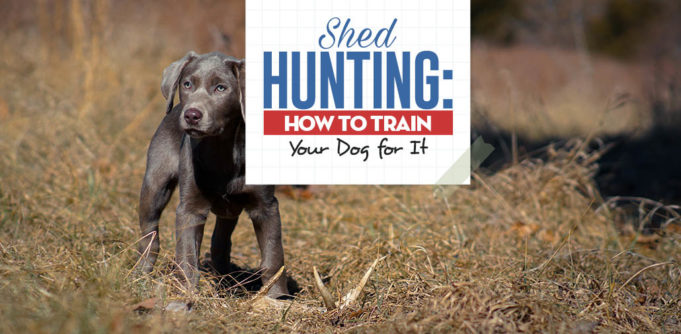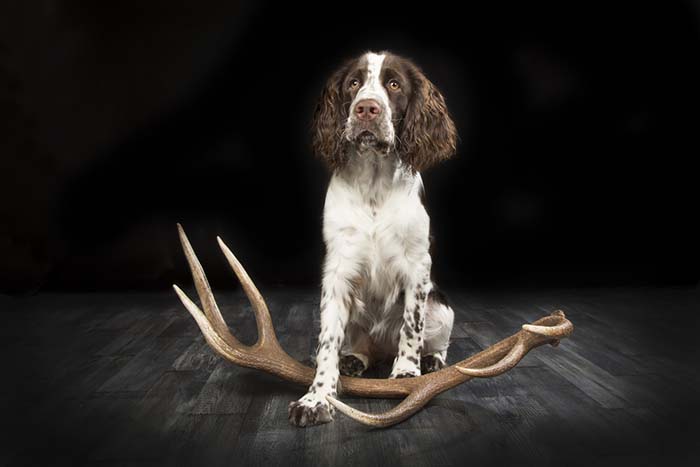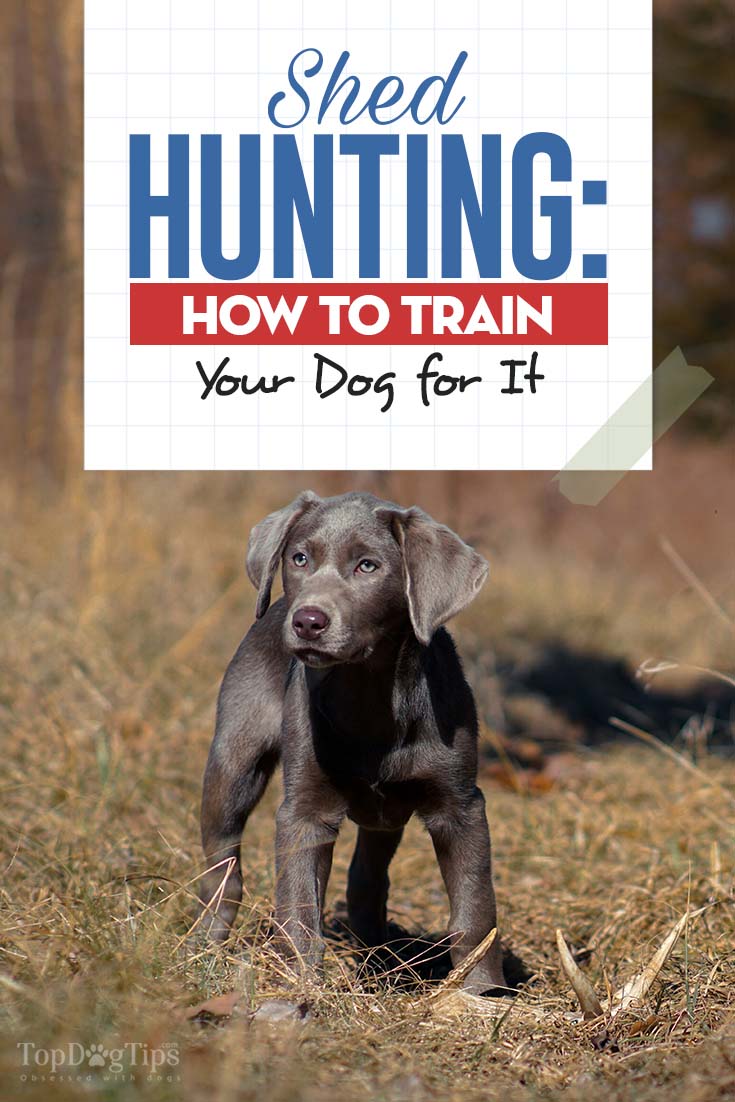Table of Contents
Shed hunting is a springtime search for shed deer antlers.
Since deer shed their antlers from mid-January to mid-March, that's the best time to start your shed-hunting endeavors.
A little help from your furry friend can go a long way to help you find antlers, but you must go through the shed hunting dog training process first.
What Are the Best Shed Hunting Dogs?
If you're already a dog owner, note that almost any canine dog can be trained for shed hunting. All they need is a good nose and some effort.
However, certain dog breeds are simply better at it than others.
if you plan to get a pet specifically for shed-hunting dog training, consider dogs from the following categories: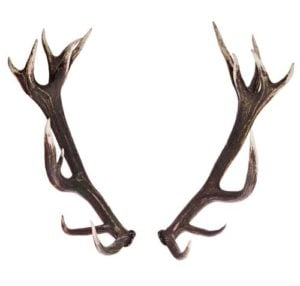
- Retriever
- Pointer
- Spaniel
- Setter
Temperament is the most important thing for a great shed-hunting dog, next to a good sense of smell.
Calm, steady dogs will have a better chance of success, and the above-mentioned types of dogs are known for these skills.
As it normally goes, most hunting gun dog breeds will be the best specimen for shed hunting dog training.
If you need a specific suggestion, pick one of these gun dog types.
How Long Does Shed Hunting Dog Training Take?
According to shed hunting dog training experts, this type of training usually lasts four to six weeks, but that will depend mostly on the training frequency.
It also depends on the age of your dog.
If you have a puppy, it might take longer, especially since you need to play-train your puppy first.
The training is never really over; you'll have to continually reinforce the habit of shed hunting in your dog so he can stay in operating shape.
How to Train a Dog for Shed Hunting?
The key to successful shed hunting dog training is to take it slowly and be patient.
Begin with small tasks in a controlled environment to increase your dog’s confidence.
Follow your dog’s pace.
If your dog isn’t obedient, start with the obedience training first, or you won’t be able to teach him to shed hunt.
Generally, there are a few parts to shed hunting dog training:
1. Retrieving Basics
Start training your pooch indoors to eliminate any distractions and help your dog concentrate on the task.
With time and practice, your dog will progress.
Only then can you start to work in a different environment with more distractions (like a backyard, park, or forest) until you finally take him to the field for some real action.
Trainers explain how retrieving basics is the first step in the shed hunting dog training process.
If you have a breed that is naturally inclined to retrieve, the instinct is there, and you just have to make it fun for your dog to bring that instinct out.
If you don’t have a dog who is naturally inclined to retrieve, you should offer treats to encourage him.
You must be patient and make each training session into a positive and fun experience.
Don’t send your dog after real antlers at the very start since he can hurt himself on the sharp points.
First, You should start with a tennis ball or something that is soft and safe.
Introduce antlers only after this basic training.
2. Introducing the Shape and Smell of Antlers
After your dog learns to retrieve things, start playing fetch with him using rubber dummy antlers.
Lace the dummy antlers with antler scent (you can purchase those online).
Toss the dummy a few feet, and when your dog brings it back, don’t forget to reward him with a treat.
The next step in shed hunting dog training is to teach your Fido to fetch on command.
Start by teaching him to sit/stay until you give the command to fetch.
Once he learns that, instead of throwing the antler, just place it in the front and walk back to your dog before you command him to fetch it.
3. Blind Retrieving
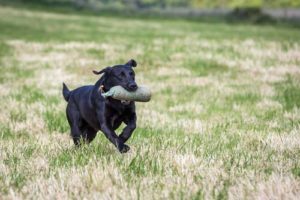 Now it's time for your dog to learn how to find and retrieve the antlers, even when he doesn’t know where they are.
Now it's time for your dog to learn how to find and retrieve the antlers, even when he doesn’t know where they are.
Start in the house, placing the antlers in one room after another.
Begin with simple places where antlers can be easily seen, then start to hide them to make it a challenge for your dog.
Also, when you give the command fetch to your dog, change the room you are in to make him find you.
After some basic shed hunting dog training like this, when you see that your Fido has mastered in-house retrieving, take the antlers outside.
First, lock your dog in the house while you hide the antlers, and then open the door and give him the fetch command. Then go inside and wait for him to find you.
At this point, start slowly introducing real antlers to your pet.
Use a dummy for a while until your dog understands that they are the same thing.
It is also time to introduce the whistle so you don’t have to shout when you go shed hunting.
There are plenty of other supplies for hunting dogs that you can use to speed up the training.
The next step is to work with multiple antlers.
The multi-antler shed hunting dog training process is the same, but instead of one antler, you hide two or three antlers.
When your pooch brings the first antler, you reward him with a treat and send him for another one.
4. Time to Go Shed Hunting
Shed hunting dog training is a simple process, and the hardest part is time and consistency.
Almost any canine can learn this as they do with obedience training, with the “blind retrieving” part being the only unique.
At this point, your dog is ready to go shed hunting.
Start with areas with a higher probability of finding shed antlers, like food sources or thermal cover areas.
Use tips from experienced shed hunters to increase your chances.
For the first few times, take your dog to a spot where you know there are antlers.
That way, you will further build his confidence and keep him interested in shed hunting.
READ NEXT: 30 Best Hunting Dogs for All Types of Game and Hunts
Disclosure: We may earn affiliate commissions at no cost to you from the links on this page. This did not affect our assessment of products. Read more here and find full disclosure here.


